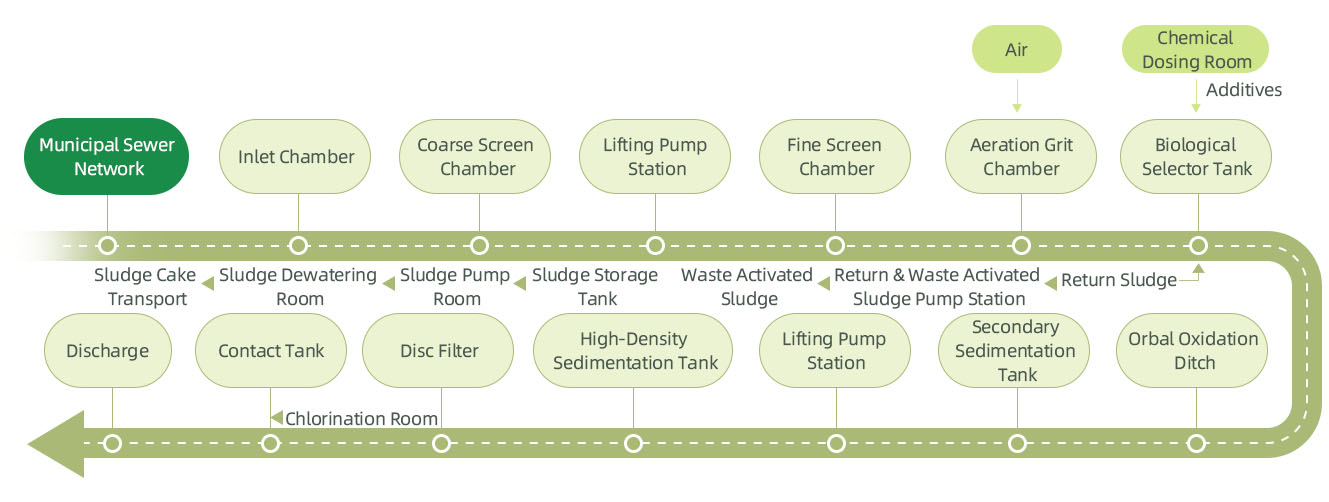Large fluctuations in influent flow
Low water temperature during winters
Insufficient dissolved oxygen
Sludge washout in the secondary sedimentation tank
Solution:Applied MicroMotion®-N、MicroMotion®-Dento address nitrogen-related issues under low-temperature conditions. To mitigate sludge washout from the secondary sedimentation tank, Bio Target Floc, a targeted biological flocculant, was applied. To resolve dissolved oxygen deficiency in the biological tank, additional aeration blowers were installed through on-site retrofitting. A year-round environmental steward service was provided, delivering tailored strategies for each plant (“one plant, one solution”), which effectively reduced overall operating costs.
Processing Scale:100000m³/d
Treatment Effect:Throughout the year, the effluent consistently met discharge standards, achieving 100% compliance for COD, ammonia nitrogen, total phosphorus, and total nitrogen.
 Characteristics
Characteristics
Large fluctuations in influent flow
Low water temperature during winters
Insufficient dissolved oxygen
Sludge washout in the secondary sedimentation tank
 Plant Profile
Plant Profile

 Description
Description
Through a detailed on-site assessment by our technical team and an extended period of environmental steward services, the following issues were identified:
1. Low temperatures during winter significantly reduced nitrification and denitrification rates, impairing overall nitrogen removal efficiency.
2. The use of disc aerators in the secondary biological treatment system led to insufficient dissolved oxygen, causing fluctuations in ammonia nitrogen levels.
3. The secondary sedimentation tank experienced sludge washout during periods of high influent flow in winter, compromising effluent quality.
4. Chemical dosing practices lacked precision and standardization, resulting in inefficient usage and higher operational costs.
 Option
Option
1. During colder seasons when both air and water temperatures were low, low-temperature nitrifying and denitrifying bacteria were dosed into the system to maintain microbial population, activity, and treatment efficiency.
2. The biochemical tank was retrofitted with an additional suspended blower to supplement the system’s dissolved oxygen demand and ensure stable effluent ammonia nitrogen levels.
3. In winter, when influent volume increased, our technicians provided 24-hour on-site service, inspecting every 2 hours. When sludge levels rose, our BioTarget flocculant was promptly dosed to prevent sludge washout.
4. We provided accurate calculations for carbon source and phosphorus removal agents, combining theoretical and actual values to determine the most cost-effective dosing strategy, thus reducing operational costs.
 Result
Result
After implementing tailored solutions, the plant achieved 100% compliance throughout the year for COD, ammonia nitrogen, total phosphorus, and total nitrogen levels. No sludge washout incidents occurred in the secondary sedimentation tank during the year.
Under the guidance of our technical team, the facility also established comprehensive operational records and documentation, implemented scientific, cost-effective, and practical management practices and reduced the plant’s overall operating costs.
 Periodic Service
Periodic Service
